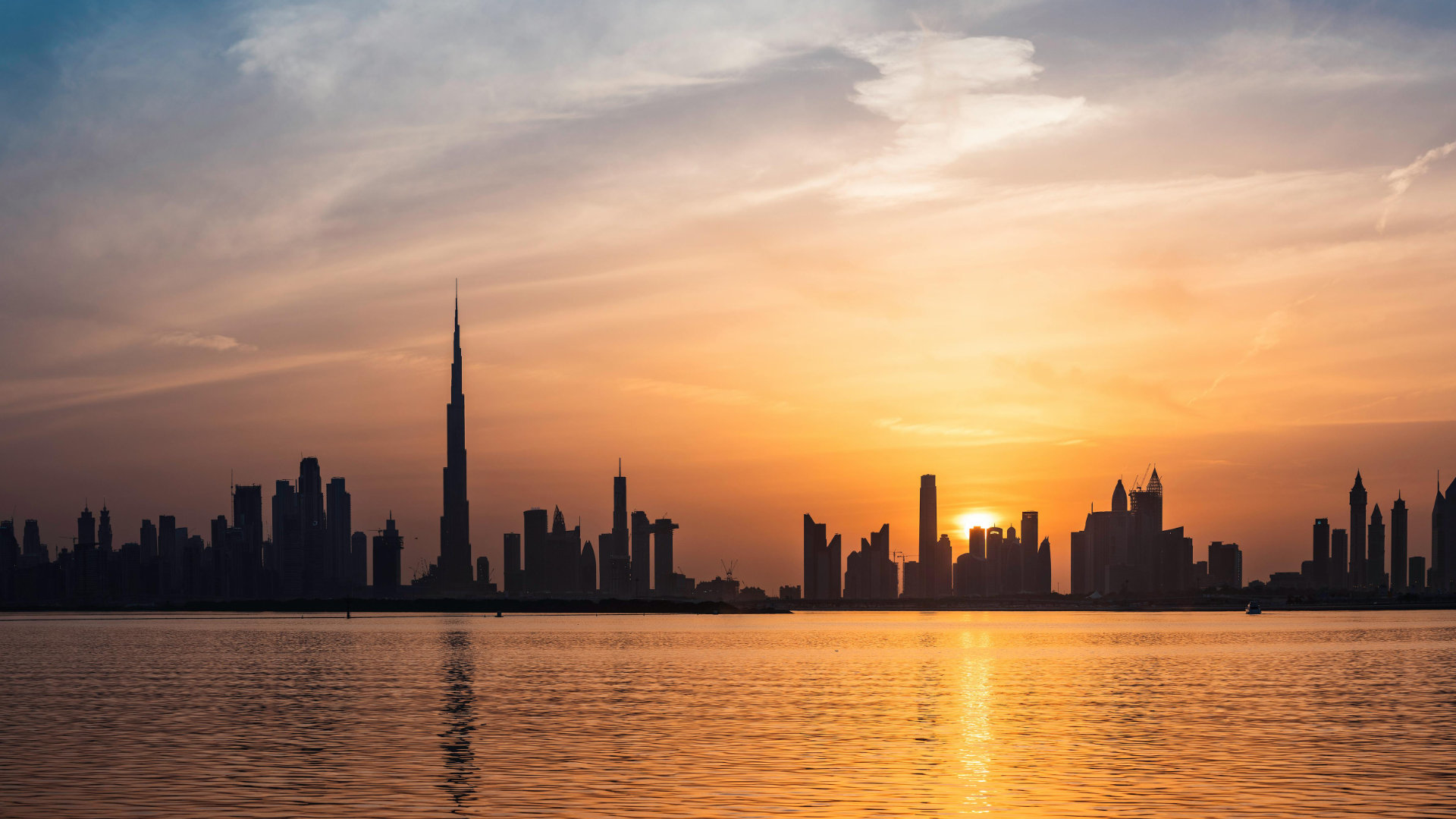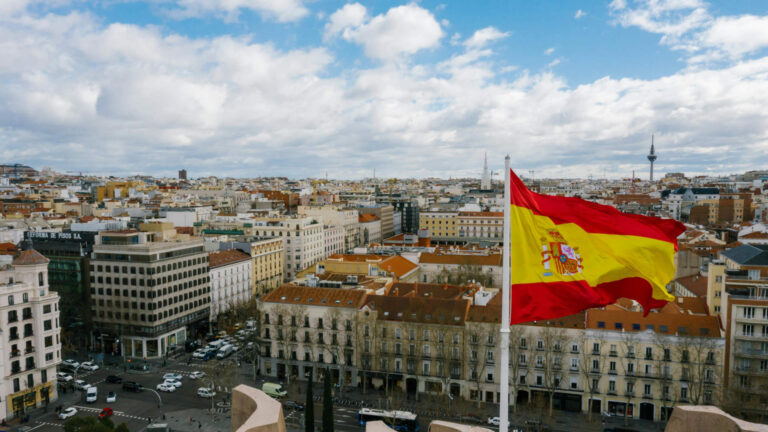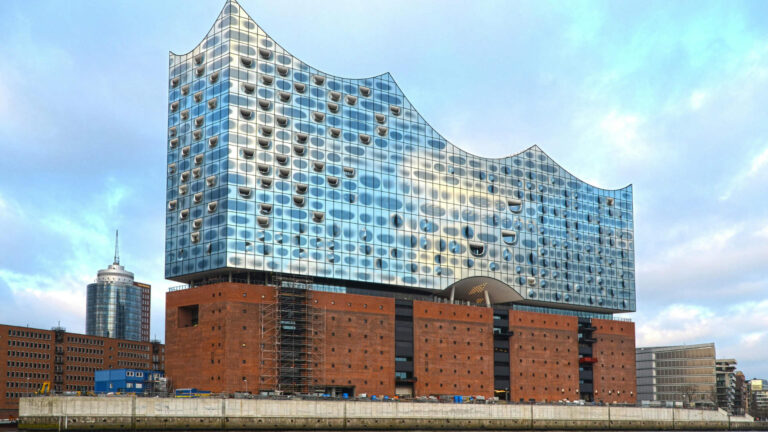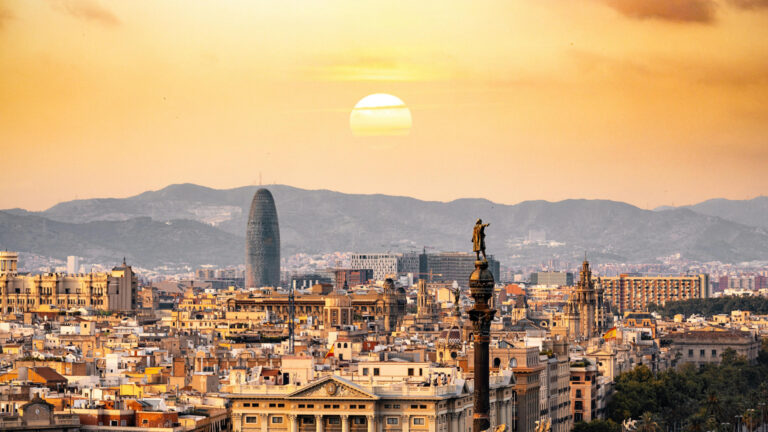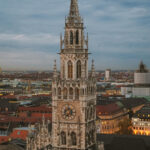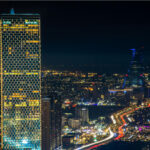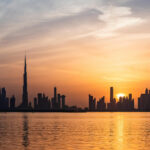Dubai greeted me with a rush of warm desert air as I stepped out of the airport, the towering skyline stretching into the distance like a futuristic dream. The city shimmered under the golden sun, a place where tradition and modernity intertwined seamlessly. The scent of oud and freshly brewed Arabic coffee lingered in the air as I made my way through the bustling streets, past luxury cars gliding effortlessly down wide avenues and groups of people dressed in elegant kanduras and abayas, moving with purpose through the city.
My first destination was the Burj Khalifa, the world’s tallest building, its sleek form piercing the sky like a needle. Standing at its base, I craned my neck to take it all in, feeling dwarfed by its sheer scale. The elevator ride to the observation deck was swift, and within seconds, I was standing nearly a thousand meters above the city. The view was breathtaking—Dubai stretched endlessly in every direction, the desert sands meeting the deep blue of the Arabian Gulf. From up here, the city seemed almost unreal, a masterpiece of human ambition and innovation.
Descending back to ground level, I wandered through Dubai Mall, a world unto itself. More than just a shopping center, it was an experience—an indoor aquarium where sharks glided silently past onlookers, a massive ice rink where skaters twirled under the artificial glow of lights, and designer boutiques showcasing the latest in global fashion. The scent of sweet baklava and saffron-infused dishes drifted from the nearby food court, tempting me to indulge in a quick bite before continuing my journey.
As the afternoon sun began to soften, I ventured into Old Dubai, a stark contrast to the gleaming skyscrapers of the city’s modern core. Here, the streets were narrower, the buildings simpler, their walls adorned with intricate wooden latticework. I strolled through the Al Fahidi Historical District, where time seemed to slow down. The wind towers stood tall, remnants of a time when air conditioning was an unknown luxury. I ducked into the Dubai Museum, housed in the city’s oldest structure, Al Fahidi Fort. The exhibits transported me back in time, showcasing Dubai’s transformation from a humble fishing village to a global metropolis.
From there, I made my way to the Gold and Spice Souks, a sensory overload of colors, scents, and sounds. Stalls overflowed with shimmering gold jewelry, their intricate designs catching the light in dazzling displays. The spice market was even more intoxicating—pyramids of saffron, cinnamon, cardamom, and dried roses filled the air with a rich, heady aroma. I found myself drawn into conversations with merchants, who eagerly offered me tiny cups of steaming chai as they spoke passionately about their goods.
As the sun set, I boarded an abra, a traditional wooden boat, to cross the Dubai Creek. The water reflected the lights of the city, the gentle rocking of the boat adding to the tranquility of the moment. On the other side, I arrived in Deira, where small cafés served strong Arabic coffee and plates of fresh dates. I ordered a plate of shawarma, the tender meat wrapped in warm, fluffy bread, drizzled with tahini sauce. Each bite was filled with the perfect blend of spice and smokiness.
Eager to experience Dubai’s nightlife, I made my way to the Madinat Jumeirah, a luxurious complex designed to resemble an ancient Arabian town. The canals winding through the area gave it a Venetian feel, with traditional abra boats ferrying guests between restaurants and lounges. I found a spot with a direct view of the Burj Al Arab, its sail-shaped silhouette glowing against the dark sky. A waiter brought me a refreshing lemon-mint drink as I sat back, soaking in the sophisticated yet relaxed atmosphere.
For a different side of Dubai, I ventured into the desert the next morning. Leaving behind the steel and glass of the city, the endless golden dunes stretched before me like rolling waves frozen in time. A desert safari took me deep into this vast expanse, the vehicle bouncing over the dunes, sending plumes of sand into the air. As the sun began to dip towards the horizon, the sky transformed into shades of orange and pink, casting a surreal glow over the landscape. I arrived at a traditional Bedouin camp, where lanterns flickered softly in the night.
Seated on plush cushions under a canopy of stars, I was served a feast of grilled meats, fragrant rice, and fresh salads. A belly dancer moved gracefully to the rhythm of traditional drums, her shimmering costume reflecting the firelight. I sipped on Arabic coffee, its rich bitterness balanced by the sweetness of freshly made dates. In that moment, surrounded by the vast stillness of the desert, I felt a deep appreciation for the contrasts that made Dubai so unique—a city where the future was being built at an astonishing pace, yet where the past was still honored and celebrated.
As I returned to the city, its skyline once again rising in the distance, I realized that Dubai was more than just luxury and opulence. It was a place of dreams, where innovation and culture coexisted, where ancient traditions met the cutting edge of technology, and where every experience, from the bustling souks to the quiet desert nights, told a story of resilience, ambition, and boundless possibility.

